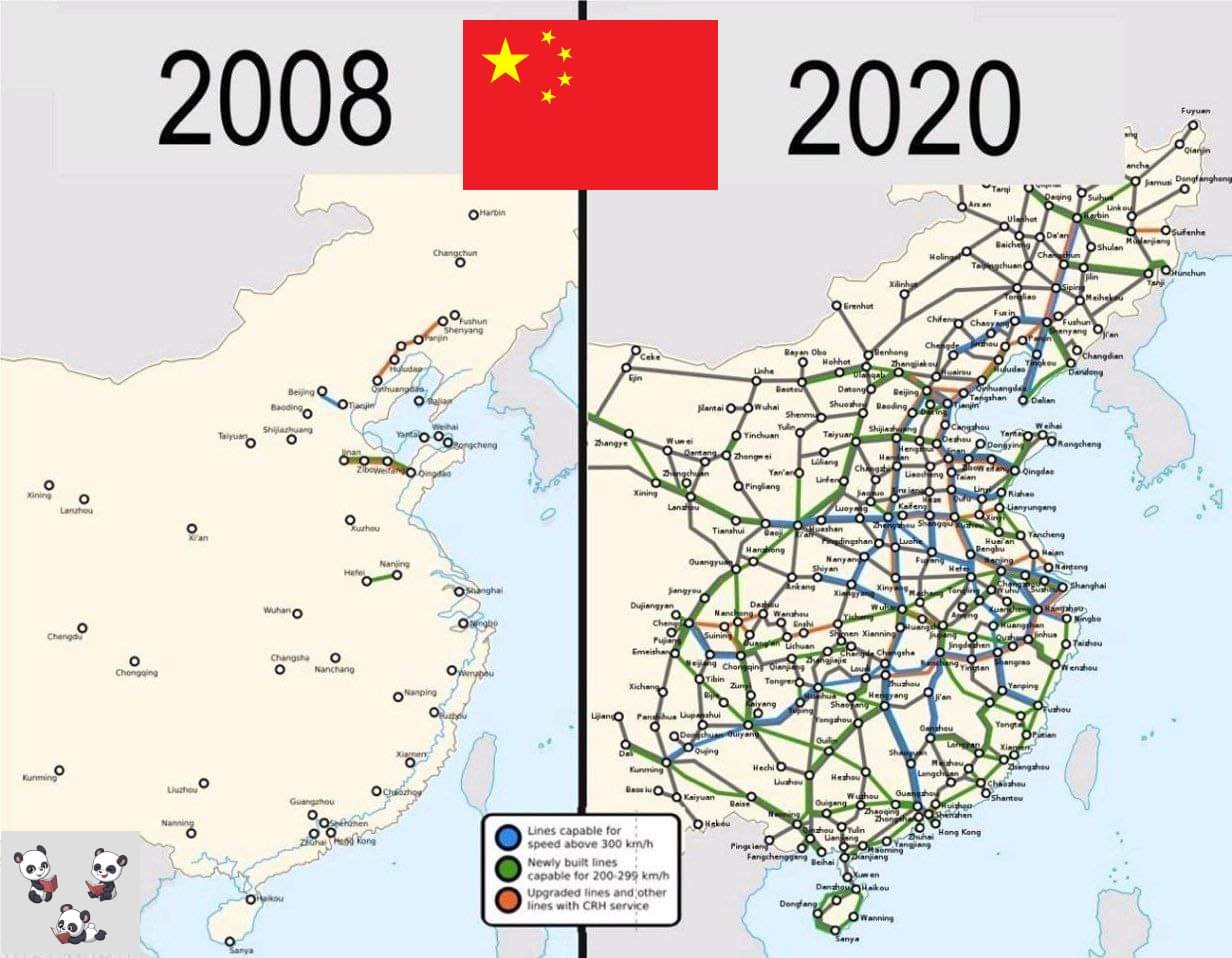In 2008, China’s high-speed rail system was just beginning its rapid expansion. At that time, it consisted of approximately 6,000 kilometers (3,730 miles) of tracks capable of speeds over 200 km/h (124 mph).
By 2020, China had developed the largest high-speed rail network in the world, spanning over 45,000 kilometers (28,000 miles) and comprising nearly two-thirds of the global total. This vast network connects nearly every major city in China, with trains running at speeds between 250 km/h (155 mph) and 350 km/h (217 mph).
The China-Laos Railway, which opened in December 2021, further extends China’s reach into Southeast Asia, directly linking the two countries.
Future Projects:
Thailand: Thailand is actively working on a high-speed rail project that will eventually connect to Laos, thereby linking Thailand to China’s extensive rail network. This project is part of a broader vision for a pan-Asian high-speed rail system, with an expected operational date in 2028.
Malaysia and Singapore: Malaysia is on track to complete its China-built rail line, which will connect the east and west coasts of Peninsular Malaysia by the end of 2026, with services expected to launch in 2027.
China to Europe: China has set its sights on connecting its high-speed rail network to Europe by 2049, aligning with the centenary of the founding of the People’s Republic of China. This ambitious goal is part of China’s Belt and Road Initiative, aiming to create a comprehensive land and sea infrastructure network that will revolutionize global connectivity. 🌍🚄
In an exciting development, China has successfully tested maglev trains in vacuum tubes, potentially paving the way for future travel at mind-blowing speeds of up to 4,000 km/h (2,485 mph). 🚅✨
“Now this is what you call having a plan! 🚄🛤️”

Nice info